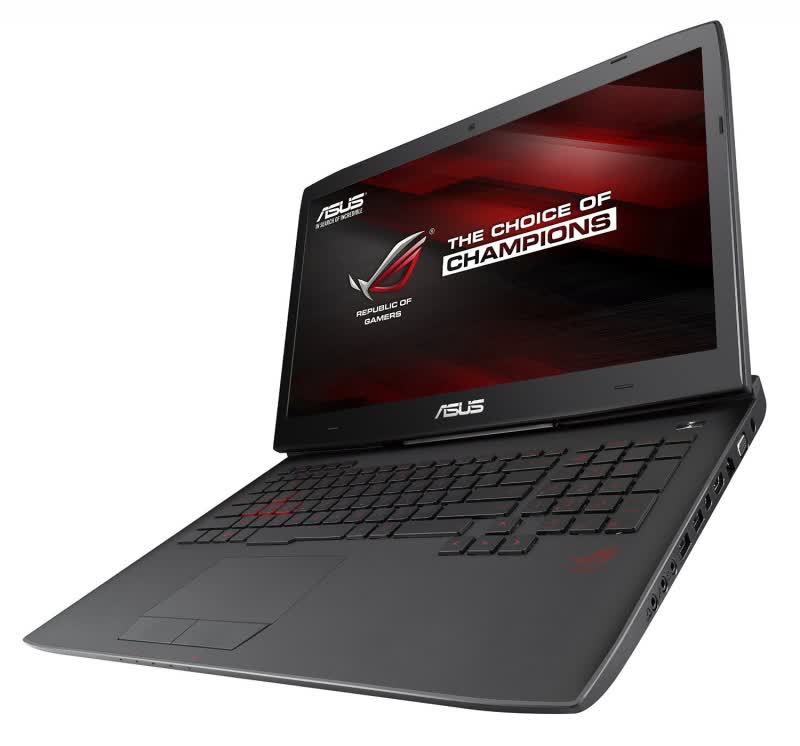
- #ASUS G751JT REVIEW MANUAL#
- #ASUS G751JT REVIEW PORTABLE#
- #ASUS G751JT REVIEW PC#
- #ASUS G751JT REVIEW LICENSE#
#ASUS G751JT REVIEW MANUAL#
Tapping the ROG button offers easy access to the machine's "Splendid Technology" display tool, which offers three default color profiles and a slider for manual adjustments. At a glance, it's not the most vibrant display I've ever seen, but ASUS has included tools to tweak that. The ROG's 17.3-inch IPS display hits all the right notes: It's large, bright and has exceptionally wide viewing angles. There's nothing to complain about, and that's more than I expect from most laptop keyboard and mouse setups. It almost feels like the machine's entire suite of inputs has been broken in beforehand, but not worn out in the slightest. The buttons aren't at all stiff or clicky. Better still, the quality of its buttons match the keyboard's fine balance between tactile resistance and a soft landing depression. I couldn't find anything wrong with the machine's trackpad, either - the ROG's mouse surface is large, responsive and quite apt at handling multi-finger gestures. If you need a little more flair beyond the keycaps' red lettering, you can always hit fn+f4 to activate a dark red backlight.

The keys themselves are a general delight, falling 2.5mm with each depression and featuring just enough tactile resistance to feel satisfying. They don't take up any extra space, at least. While none of these are unwelcome, they're also not really necessary: the GeForce Experience button seems to merely replicate the program's own screen-capture hotkey functionality, and the Steam button simply launches Big Picture mode in a few less clicks than using the mouse would. There are a few custom keys, though - including three programmable macro keys (labeled m1, m2 and m3) and specific buttons to launch NVIDIA GeForce Experience, Steam and ASUS' own "gaming center" menu (more on that later). Mostly, it's little things: an extra layer of red coloring running around the edges of the W, A, S and D keys, for instance, or the small, tactile "bump" on the W key to help players find it without looking down.
#ASUS G751JT REVIEW PC#
The ROG's island-style keyboard doesn't look like much at a glance, but spend a little time with it and you'll find it littered with subtle tweaks designed specifically for PC gamers. While I can't fault a single inch of that frame for poor build quality, it is an admittedly (and unsurprisingly) cumbersome laptop. Although "huge and heavy" are expected from 17-inch gaming notebooks, I'd be remiss not to mention the GT751's measurements, so here they are: 16.4 x 12.5 x 1.7 inches (length, width and thickness) and a total weight of 8.5 pounds. Two additional USB 3.0 connectors are arranged on the left side, as are the rig's optical drive (a Blu-ray burner) and SD/MMC card reader. Looking for connections? There are plenty on the G751: two USB 3.0 ports, a VGA connector, three audio jacks, Ethernet, HDMI and even a Thunderbolt port can be found on the machine's right edge. The ledge and lid have a few brushed-metal accents and the vents are flared with red paint that lends them a sort of "jet intake" look, but the rest of the machine is covered in a matte, almost soft finish.

#ASUS G751JT REVIEW LICENSE#
It's a unique design, and it gives the rest of the machine's chassis license to be fairly subtle by comparison. Not only does moving the screen closer to the user make the laptop seem a little less large while it's being used, but it also gives the machine an isolated area to vent heat away from the user.

This look is typical of ASUS' heaviest gaming machines, but it's more than just visual flair - it's a surprisingly well-thought-out design. This leaves a distinctive, large "brick" jutting out from behind the laptop's open lid. Even at a glance, you can tell it's a little different: Instead of placing its screen hinge on the far edge of the machine's base, the G751 pivots its screen a few inches away from that edge. Fortunately, ASUS' ROG G751 does, owning its gargantuan frame by taking liberties with the standard tropes of laptop design. It's a necessity, of course, but it's also a shame - few gaming rigs embrace their size as a means of standing out.

#ASUS G751JT REVIEW PORTABLE#
Thick, heavy chassis and enormous screens almost make them a parody of portable computing. In a world where most notebooks strive to get thinner and lighter, 17-inch gaming laptops stand out like the sorest of thumbs.


 0 kommentar(er)
0 kommentar(er)
